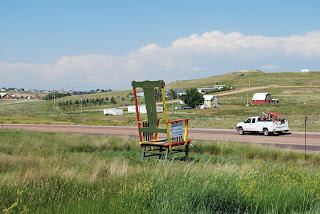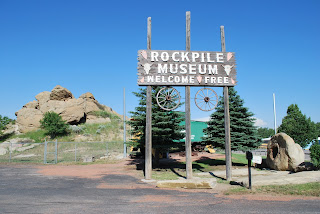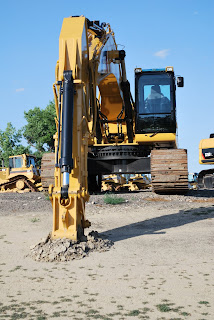
40. Wyoming and the tower of the devil


We had a quick break in the coal-mining town of Gillette.





then carried along to the tower.

DT has carried many titles, various tribes have settled on various names. In 1875 Dick Dodge was exploring the area. When his interpreter mistook a native translation, Dodge was told the tower was called Bad Gods Tower. The western explorer's fumble quickly solidified as truth, thus it became and remains devils tower.

Natives had lived the lands about the tower for thousands of years. The vicinity was hearty in hunting. Potable springs flowed from the tower itself and the Belle Fourche river had fashioned a comfortable scene. Tribes spent extended amounts of time at the tower amid their nomadic excursions.

In the 1850s, brand new Americans blotted the natives out. In the late 1800s American paintings and photographs gave fame to its presence. And in 1906, Teddy Roosevelt declared the tower the nations 1st national monument. He based this declaration on the scientific importance of the tower.

Much to the disapproval of American Indians, the tower has become a popular rock climbing spot. The site that had once served a sacred source for worship and comfort is now a touristy beauty spot for the American traveler. In an attempt to appease the disgust of contemporary tribes, the park has allocated the month of June for the Native Americans to continue their cultural practices with minimal tourist interception. Guests are forbidden to climb about the monolith for the full month.


The tower, as geologists explain it, is the center of a long-dead volcano. Over millions of years, the Belle Fourche's eroding waters have swept away the soft sedimentary rock once surrounding the tower. Geologists believe that the cooling and shrinking of molten rock as it hardened created the columar look. As the remaining sedimentary base continues to erode the tower continues to grow.

A native legend explains the story differently--A story of children helped by buffalo, a flat rock, and a tree as they retreat from a bear:
As a group of kids flee from a pursuing bear, they ask a nearby buffalo herd to hinder the bear and facilitate their escape. In the newfound time granted by the friendly buffalo, the children arrive atop a large flat rock. The rock asks that they pace 4 times around its perimeter and then stand on top. The children do as they're told. As the bear approaches, the flat rock rises high from the prairie earth. In a final energetic fury, the bear paws and claws into the rock creating the columnar furrows that can be seen today. In the end, a small tree rooted atop the rock pedestal asks the children to climb onto its perches. The kids obey and the tree grows high into the sky. A nighttime constellation still depicts the event in starry dots.



State Stats:
At around 494,000 peoples, Wyoming is the least populous united state. Its a historical hotbed for dinosaur fossils. The state dino is the triceratops. The mammal is the buffalo and the reptile is the horned lizard.
































